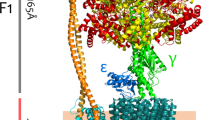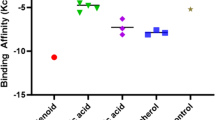Abstract
(R)-[3,5-bis(trifluoromethyl)phenyl] ethanol ((R)-BTPE) is a valuable chiral intermediate for the synthesis of antiemetic drug Aprepitant and Fosaprepitant. A Leifsonia xyli HS0904-derived carbonyl reductase (LXCAR), an effective biocatalyst for the asymmetric reduction of 3,5-bis(trifluoromethyl) acetophenone (BTAP) to (R)-BTPE, was overexpressed in Escherichia coli BL21 (DE3). Bioinformatics analysis indicated that the amino acid sequence of recombinant LXCAR showed 89 % similarity to short-chain dehydrogenase/reductase. E. coli recombinant carbonyl reductase crude extract showed a specific activity of 1.54 U/mg, which was 62 times higher than that of L. xyli HS0904 crude extract. By using error-prone polymerase chain reaction and site-directed mutagenesis, the engineered LXCAR demonstrated superior catalytic activity toward BTAP, and the obtained mutant LXCAR-S154Y exhibited nearly 13-fold, 5.4-fold, and 2.3-fold increase in k cat/K m value, k cat value, and specific activity toward BTAP, respectively, compared to the recombinant LXCAR. Additionally, the reduction of BTAP by whole cells of mutant LXCAR-S154Y afforded a best yield of 99.6 % for (R)-BTPE within 2 h at 200 mM BTAP, which was shortened by 28 and 2 h compared to those catalyzed by L. xyli HS0904 cells and recombinant E. coli cells expressing LXCAR, respectively. Moreover, a yield of 82.5 % for (R)-BTPE was achieved within 12 h at an increased BTAP concentration of up to 1,000 mM (256 g/l), representing a 1.9-fold increase over the recombinant LXCAR. Homology modeling and docking analysis revealed the molecular basis for the high catalytic activity of mutant LXCAR-S154Y toward BTAP. The results present here provide a promising alternative for economical and efficient production of chiral alcohols by engineered LXCAR.





Similar content being viewed by others
References
Asako H, Shimizu M, Itoh N (2008) Engineering of NADPH-dependent aldo-keto reductase from Penicillium citrinum by directed evolution to improve thermostability and enantioselectivity. Appl Microbiol Biotechnol 80:805–812
Bradford M (1976) A rapid and sensitive method for the quantitation of microgram quantities of protein utilizing the principle of protein-dye binding. Anal Biochem 72:248–252
Filling C, Berndt KD, Benach J, Knapp S, Prozorovski T, Nordling E, Oppermann U (2002) Critical residues for structure and catalysis in short-chain dehydrogenases/reductases. J Biol Chem 277:25677–25684
Gelo-Pujic M, Guyader FL, Schlama T (2006) Microbial and homogenous asymmetric catalysis in the reduction of 1-[3,5-bis(trifluoromethyl)phenyl] ethanone. Tetrahedron Asymmetry 17:2000–2005
Gerstenbruch S, Wulf H, Mussmann N, O'Connell T, Maurer KH, Bornscheuer UT (2012) Asymmetric synthesis of D-glyceric acid by an alditol oxidase and directed evolution for enhanced oxidative activity towards glycerol. Appl Microbiol Biotechnol 96:1243–1252
Goldberg K, Schroer K, Lütz S, Liese A (2007) Biocatalytic ketone reduction—a powerful tool for the production of chiral alcohols—part I: processes with isolated enzymes. Appl Microbiol Biotechnol 76:237–248
Hoelsch K, Suhrer I, Heusel M, Weuster-Botz D (2013) Engineering of formate dehydrogenase: synergistic effect of mutations affecting cofactor specificity and chemical stability. Appl Microbiol Biotechnol 97:2473–2481
Hoffmann F, Maser E (2007) Carbonyl reductases and pluripotent hydroxysteroid dehydrogenases of the short-chain dehydrogenase/reductase superfamily. Drug Metab Rev 39:87–144
Homann MJ, Vail RB, Previte E, Tamarez M, Morgan B, Dodds DR, Zaks A (2004) Rapid identification of enantioselective ketone reductions using targeted microbial libraries. Tetrahedron 60:789–797
Huisman GW, Liang J, Krebber A (2010) Practical chiral alcohol manufacture using ketoreductases. Curr Opin Chem Biol 14:122–129
Hyndman D, Bauman DR, Heredia VV, Penning TM (2003) The aldo-keto reductase superfamily homepage. Chem Biol Interact 143:621–631
Inoue K, Makino Y, Itoh N (2005) Purification and characterization of a novel alcohol dehydrogenase from Leifsonia sp. strain S749: a promising biocatalyst for an asymmetric hydrogen transfer bioreduction. Appl Environ Microb 71:3633–3641
Inoue K, Makino Y, Dairi T, Itoh N (2006) Gene cloning and expression of Leifsonia alcohol dehydrogenase (LSADH) involved in asymmetric hydrogen-transfer bioreduction to produce (R)-form chiral alcohols. Biosci Biotechnol Biochem 70:418–426
Jakoblinnert A, van den Wittenboer A, Shivange AV, Bocola M, Heffele L, Ansorge-Schumacher M, Schwaneberg U (2013) Design of an activity and stability improved carbonyl reductase from Candida parapsilosis. J Biotechnol 165:52–62
Jin Y, Wu XM, Guan YM, Gu DY (2012) Efficacy and safety of aprepitant in the prevention of chemotherapy-induced nausea and vomiting: a pooled analysis. Support Care Cancer 20:1815–1822
Jörnvall H, Persson B, Krook M, Atrian S, Gonzalez-Duarte R, Jeffery J, Ghosh D (1995) Short-chain dehydrogenases/reductases (SDR). Biochemistry 34:6003–6013
Kallberg Y, Oppermann U, Jörnvall H, Persson B (2002) Short-chain dehydrogenase/reductase (SDR) relationships: a large family with eight clusters common to human, animal, and plant genomes. Protein Sci 11:636–641
Kurbanoglu EB, Zilbeyaz K, Taskin M, Kurbanoglu NI (2009) Total production of (R)-3,5-bistrifluoromethylphenyl ethanol by asymmetric reduction of 3,5-bis(trifluoromethyl)-acetophenone in the submerged culture of Penicillium expansum isolate. Tetrahedron Asymmetry 20:2759–2763
Laemmli UK (1970) Cleavage of structural proteins during the assembly of the head of bacteriophage T4. Nature 227:680–685
Laskowski RA, Macarthur MW, Moss DS, Thornton JM (1993) PROCHECK: a program to check the stereochemical quality of protein structures. J Appl Crystallogr 26:283–291
Li HM, Yang Y, Zhu DM, Hua L, Kantardjieff K (2010) Highly enantioselective mutant carbonyl reductases created via structure-based site-saturation mutagenesis. J Org Chem 75:7559–7564
Li J, Wang P, He JY, Huang J, Tang J (2013) Efficient biocatalytic synthesis of (R)-[3,5-bis(trifluoromethyl) phenyl] ethanol by a newly isolated Trichoderma asperellum ZJPH0810 using dual cosubstrate: ethanol and glycerol. Appl Microbiol Biotechnol 97:6685–6692
Li ZW, Roccatano D, Lorenz M, Schwaneberg U (2012) Directed evolution of subtilisin E into a highly active and guanidinium chloride and sodium dodecylsulfate-tolerant protease. Chem Bio Chem 13:691–699
Liang J, Mundorff E, Voladri R, Jenne S, Gilson L, Conway A, Krebber A, Wong J, Huisman G, Truesdell S, Lalonde J (2009) Highly enantioselective reduction of a small heterocyclic ketone: biocatalytic reduction of tetrahydrothiophene-3-one to the corresponding (R)-alcohol. Org Process Res Dev 14:188–192
Liang P, Qin B, Mu M, Zhang X, Jia X, You S (2013) Prelog and anti-Prelog stereoselectivity of two ketoreductases from Candida glabrata. Biotechnol Lett 35:1469–1473
Lin WD, Chen CY, Chen HC, Hsu WH (2010) Enantioselective synthesis of (S)-phenylephrine by whole cells of recombinant Escherichia coli expressing the amino alcohol dehydrogenase gene from Rhodococcus erythropolis BCRC 10909. Process Biochem 45:1529–1536
Machielsen R, Leferink NGH, Hendriks A, Brouns SJ, Hennemann HG, Daubmann T, van der Oost J (2008) Laboratory evolution of Pyrococcus furiosus alcohol dehydrogenase to improve the production of (2S, 5S)-hexanediol at moderate temperatures. Extremophiles, 12:587–594
Nakade S, Ohno T, Kitagawa J, Hashimoto Y (2008) Population pharmacokinetics of aprepitant and dexamethasone in the prevention of chemotherapy-induced nausea and vomiting. Cancer Chemother Pharmacol 63:75–83
Nordling E, Jörnvall H, Persson B (2002) Medium-chain dehydrogenases/reductases (MDR). Eur J Biochem 269:4267–4276
Oppermann U, Filling C, Hult M, Shafqat N, Wu X, Lindh M, Jörnvall H (2003) Short-chain dehydrogenases/reductases (SDR): the 2002 update. Chem Biol Interact 143:247–253
Ouyang Q, Wang P, Huang J, Cai JB, He JY (2013) Efficient enantioselective synthesis of (R)-[3,5-bis(trifluoromethyl) phenyl] ethanol by Leifsonia xyli CCTCC M 2010241 using isopropanol as co-substrate. J Microbiol Biotechnol 23:343–350
Pace V, Cabrera ÁC, Ferrario V, Sinisterra JV, Ebert C, Gardossi L, Alcántara AR (2011) Structural bases for understanding the stereoselectivity in ketone reductions with ADH from Thermus thermophilus: a quantitative model. J Mol Catal B Enzym 70:23–31
Patel RN (2008) Synthesis of chiral pharmaceutical intermediates by biocatalysis. Coord Chem Rev 252:659–701
Rocha-Martín J, Vega D, Bolivar JM, Hidalgo A, Berenguer J, Guisán JM, López-Gallego F (2012) Characterization and further stabilization of a new anti-Prelog specific alcohol dehydrogenase from Thermus thermophilus HB27 for asymmetric reduction of carbonyl compounds. Bioresour Technol 103:343–350
Sambrook J, Russell DW (2001) Molecular cloning: a laboratory manual, 3rd edn. Cold Spring Harbor Laboratory, New York
Wang P, Cai JB, Ouyang Q, He JY, Su HZ (2011) Asymmetric biocatalytic reduction of 3,5-bis (trifluoromethyl) acetophenone to (1R)-[3,5-bis(trifluoromethyl)phenyl] ethanol using whole cells of newly isolated Leifsonia xyli HS0904. Appl Microbiol Biotechnol 90:1897–1904
Wang M, Si T, Zhao HM (2012) Biocatalyst development by directed evolution. Bioresour Technol 115:117–125
Wang NQ, Huang J, Luo HD, Wang P, Li J (2013) Purification and characterization of a new carbonyl reductase from Leifsonia xyli HS0904 involved in stereoselective reduction of 3,5-bis(trifluoromethyl) acetophenone. J Mol Catal B Enzym 92:1–6
Wu CE, Liaw CC (2012) Using aprepitant as secondary antiemetic prophylaxis for cancer patients with cisplatin-induced emesis. Support Care Cancer 20:2357–2361
Zhang RZ, Geng YW, Xu Y, Zhang WC, Wang SS, Xiao R (2011) Carbonyl reductase SCRII from Candida parapsilosis catalyzes anti-Prelog reaction to (S)-1-phenyl-1,2-ethanediol with absolute stereochemical selectivity. Bioresour Technol 102:483–489
Zilbeyaz K, Kurbanoglu EB (2010) Highly enantiomeric reduction of acetophenone and its derivatives by locally isolated Rhodotorula glutinis. Chirality 22:849–854
Acknowledgments
This work was financially supported by grants from the National Natural Science Foundation of China (no. 21076193) and the Foundation of Zhejiang Educational Commission, China (no. Y201226056).
Author information
Authors and Affiliations
Corresponding author
Rights and permissions
About this article
Cite this article
Wang, NQ., Sun, J., Huang, J. et al. Cloning, expression, and directed evolution of carbonyl reductase from Leifsonia xyli HS0904 with enhanced catalytic efficiency. Appl Microbiol Biotechnol 98, 8591–8601 (2014). https://doi.org/10.1007/s00253-014-5770-z
Received:
Revised:
Accepted:
Published:
Issue Date:
DOI: https://doi.org/10.1007/s00253-014-5770-z




